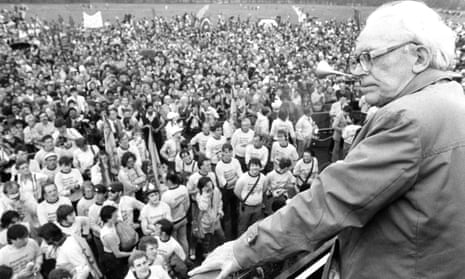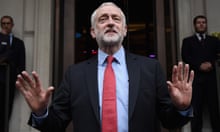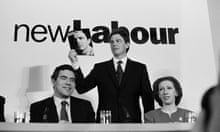It is an irony of history that one of the little-remembered but key elements of Labour’s 1983 manifesto, infamously dubbed the longest suicide note in history, was a pledge that Britain would leave the European Economic Community within five years.
Fast-forward to 2017 and Labour’s leaked draft manifesto, with its vows to renationalise the railways and Royal Mail, has already been attacked as “dragging Britain back to the 1970s” and predictably dubbed by the Tories as “the new suicide note”.
The 1983 manifesto, The New Hope for Britain, was the product of the party’s labyrinthine internal processes. It included promises to cancel the Trident programme and to refuse to deploy US nuclear cruise missiles, to abolish the House of Lords, and to bring about “a fundamental and irreversible shift in the balance of power and wealth in favour of working people and their families”.
Some of its policies, controversial at the time, look commonplace today, such as action to improve women’s rights, to tackle racial discrimination, to improve open government and tackle pollution.
But at the centre of the manifesto, at a time when Britain was dominated by the spectre of mass unemployment, lay an £11bn “emergency action programme” that included a massive increase in public investment in housing and transport and “mass programme of construction to build our way out of the slump”.
A five-year national plan would be drawn up by a Labour government, employers and the unions, with a national investment bank at its heart. The privatisations of Margaret Thatcher’s first term, covering the steel, shipbuilding and aerospace industries, would be taken back into public ownership.
That manifesto, unlike its predecessors, sailed through the clause V shadow cabinet/national executive meeting under Michael Foot’s leadership without the usual trade-off between the left and right wings of the party.
Despite the grave reservations of senior Labour figures, including the then deputy leader, Denis Healey, it went on to become a key part of the mythology around Thatcher’s Falklands factor-fuelled 1983 landslide victory.
The chaos that surrounded Labour’s 1983 campaign was summed up by the story of the mystery man who attended the daily campaign meetings. Nobody recognised him for the first two days. On the third he revealed he was Foot’s special branch detective.
The young Jeremy Corbyn, who first became an MP in that election, is said to have regarded the manifesto as “a very interesting electoral platform but lots of people in the party were quite frightened of it”.
In the face of Labour’s worst performance since 1931, Tony Benn took comfort by arguing that “for the first time since 1945, a political party with an openly socialist policy has received the support of over 8.5 million people. This is a remarkable development by any standards and it deserves some analysis.”
The 2017 manifesto includes at its heart a national investment plan, the renationalisation of the railways, Royal Mail and some energy companies, and the abolition of tuition fees. Individually, each policy – whether its recruiting 10,000 more police officers, investing in building 1m homes or planting a million new native trees – may well make sense and be popular.
This manifesto may include a commitment to renew Trident. The pledge to renationalise the railways may take many years to complete given that it will be done as and when existing franchises expire. The increases in corporation tax and capital gains tax may well fund most of the programme. But taken together, the overall impact – even when the prices are finally added to the menu – is of a document that lacks electoral credibility.
The 1983 version was drafted in the aftermath of the 1981 recession and the Falklands war. The 2017 version comes at a time of near-full employment and yet the language remains unchanged. This draft version comes in at 43 pages. The 1983 published version was 39 pages. We have yet to see if next week’s final version will qualify as the longest suicide note in history.








